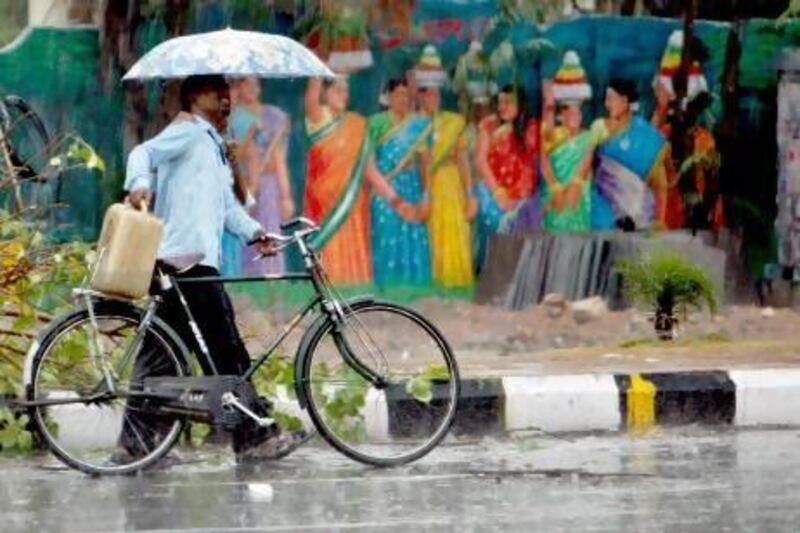NEW DELHI // Black clouds swept onto the southern coast of Kerala yesterday as the south-west monsoon arrived right on schedule.
The arrival and strength is watched avidly every year by a region that is often starved of water and pegs its agricultural fortunes on this season of rain. Nearly 55 per cent of India's farmland - growing crops such as sugarcane, cotton, soya and rice - is irrigated by monsoon rain.
The India Meteorological Department's (IMD) 14 monitoring stations in Kerala had recorded heavy rainfall for the past two days, marking the last of the pre-monsoon showers that gave way to the full monsoon.
Jatin Singh, the chief executive of Skynet, a private weather forecasting service, said the monsoon, which lasts until September, may have even started as early as Tuesday.
"We're already seeing rain all the way up to Bangalore. So the IMD has maybe been overcautious in announcing it today," Mr Singh said yesterday.
Over the next two days, the monsoon will advance further into the southern states of Karnataka, Tamil Nadu and Andhra Pradesh, the IMD predicted.
Last year, when the monsoon hit Kerala four days after the June 1 forecast, seven states in south and west India were hit by a drought because of a deficit in the monsoon.
This year "things look good", said SWA Naqvi, the director of the Goa-based National Institute of Oceanography.
His team, he said, had observed no aberrations in temperature and circulation patterns, which drive the strength of the monsoon. This means "that the monsoon rains will be normal".
Mr Singh, of Skynet, also thought that indicators pointed to a good monsoon.
"There will be a small dip in July, but then, every monsoon has a period in which it doesn't rain," he said. "Overall, if you add up the rain that we will get over the next four months, it should be 101-102 per cent - one or two per cent above average."
The IMD has been more conservative in its estimate. In a statement on Friday, the IMD's director K Santosh estimated that the monsoon would be 98 per cent of the average.
The rains will bring relief to many parts of the country that have suffered from heatwaves in recent weeks.
Perhaps the worst hit has been the state of Andhra Pradesh, where more than 500 people have died since April 1 from the heat, as temperatures touched 45°C in most parts of the state.
Recent scattered rains in the state have helped temperatures drop, said Vinod Kumar Ekbote, assistant commissioner at the Andhra Pradesh Disaster Management Department.
"But this heatwave, this phenomenon, was unexpected this year," Mr Ekbote said, "although every year around May we know we are going to get some of the hottest days of the year."
A heatwave on a smaller scale hit Andhra Pradesh last year, killing about 400 people.
"It is normal practice for us, in the beginning of May, to issue advisories, through TV and newspapers, on how to avoid a sun stroke," he said. "We ran continuous campaigns with medical and health tips on how to prevent it. Health care staff stocked oral rehydration solution and they were equipped to deal with stroke victims."
The state was still verifying the precise number of people who had died from the heat this year, Mr Ekbote said, although he confirmed that there were more than 500 victims.
North India, which had also experienced a heatwave in which high temperatures hit 46°C, experienced some respite with light rain.
These showers, however, were unconnected to the monsoon, which usually arrives in Mumbai a week into June and in the north of India by the first week of July.
[ ssubramanian@thenational.ae ]
sbhattacharya@thenational.ae





